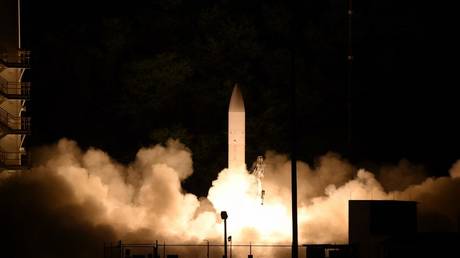Scientists reproduce an exotic form of magnesium and make some discoveries about its nuclear structure

(Natural News) Researchers previously created an exotic form of magnesium called magnesium-40 by adding as many neutrons as possible to the nucleus of the atom. Ten years later, a new research team came across new data on the nuclear structure of magnesium-40.
The atomic number of an element depends on the number of positively-charged protons in its atomic nucleus. Meanwhile, the number of neutrally-charged neutrons can vary without moving the element from its spot on the periodic table. When an atom contains a different number of neutrons than the baseline, it is labeled an “isotope” of the element.
In nature, the most plentiful and stable type of magnesium contains 12 protons, 12 neutrons, and 12 negatively-charged electrons in each atom. In contrast, the magnesium-40 isotope contains 28 neutrons, a number that the researchers believe is the neutron drip line for magnesium.
The neutron drip line refers to the maximum number of neutrons that can fit inside a single atom. Adding a neutron to an atom that is already at its neutron drip line will cause the excess neutral particle to “drip” out of the nucleus. (Related: Can magnesium batteries revolutionize battery technology?)
It takes three cyclotron-type particle accelerators to create magnesium-40
“The interesting question in our minds all along, when you get so close to the drip line, is: ‘Does the way that the neutrons and protons arrange themselves change?'” said Berkeley Lab researcher Paul Fallon, who served as a co-author of the study. “One of the major goals of the nuclear physics field is to understand the structure from the nucleus of an element all the way to the drip line.”
Support our mission and protect your health: Organic Seeds of Life combines Red Raspberry Seed Power, Black Cumin Seed Power and Red Grape Seed Powder into the most potent nutrient-rich supplemental superfood powder you've ever experienced. Loaded with flavonoids, antioxidants, anthocyanins, OPCs, ALA and a vast array of vital nutrients. Learn more here.
He and his team followed up on the experiments conducted at the Radioactive Isotope Beam Factory (RIBF) in Japan. They combined the power of three cyclotron-type particle accelerators to generate high-energy particle beams that travel at extremely high speeds.
The experiment used calcium-48, a stable isotope of calcium with 20 protons and 28 neutrons. This calcium-48 beam targeted a spinning disk of thin carbon. When the nuclei of accelerated calcium-48 crashed into some of the carbon nuclei, they produced aluminum-41, an isotope of aluminum.
The researchers collected the aluminum-41 atoms and channeled them into a beam that got fired at a secondary target made of a specific plastic. Upon hitting the target, the nuclei of aluminum-41 atoms lost one proton each, which led to the creation of magnesium-40 nuclei.
A magnesium-40 nucleus has a different shape compared to other magnesium isotopes
Using a gamma-ray detector, the researchers studied the excited states of magnesium-40. They evaluated the measurements of the gamma rays generated during the interaction between aluminum-41 and its target. They also measured the energies of excited states in other isotopes of magnesium, such as magnesium-36 and magnesium-38.
“Most models said that Mg-40 should look very similar to the lighter isotopes,” said Berkeley Lab researcher Heather Crawford. “But it didn’t. When we see something that looks very different, then the challenge is for new theories to capture all of this.”
The results of the experiment clashed with existing theories on magnesium-40. The nuclei of lighter magnesium isotopes have less neutrons than magnesium-40 nuclei, and this discrepancy may be the reason behind their structural differences. Current calculations indicate that magnesium-40 nuclei are highly deformed and possibly shaped like a football.
The extra two neutrons in the magnesium isotope could be buzzing around the core. Such behavior can produce a halo nucleus.
Fallon and Crawford believe that new calculations are needed to explain the alterations in the shape of magnesium-40 nuclei. The other magnesium isotopes could help determine the shape of the magnesium-40 core and reveal the reason for its different nuclear structure.
Sources include:



